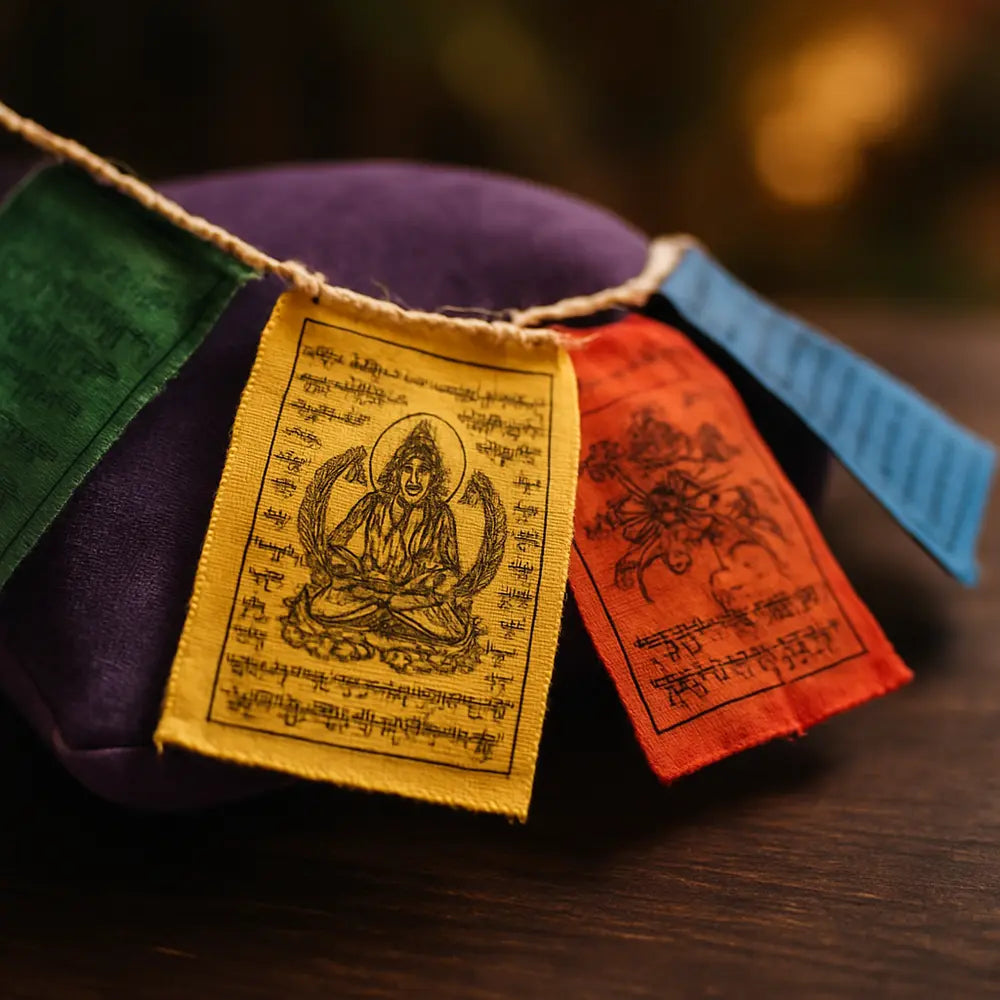
Drapeaux de prière tibétains
2 produits
Affiche 1 - 2 de 2 produits
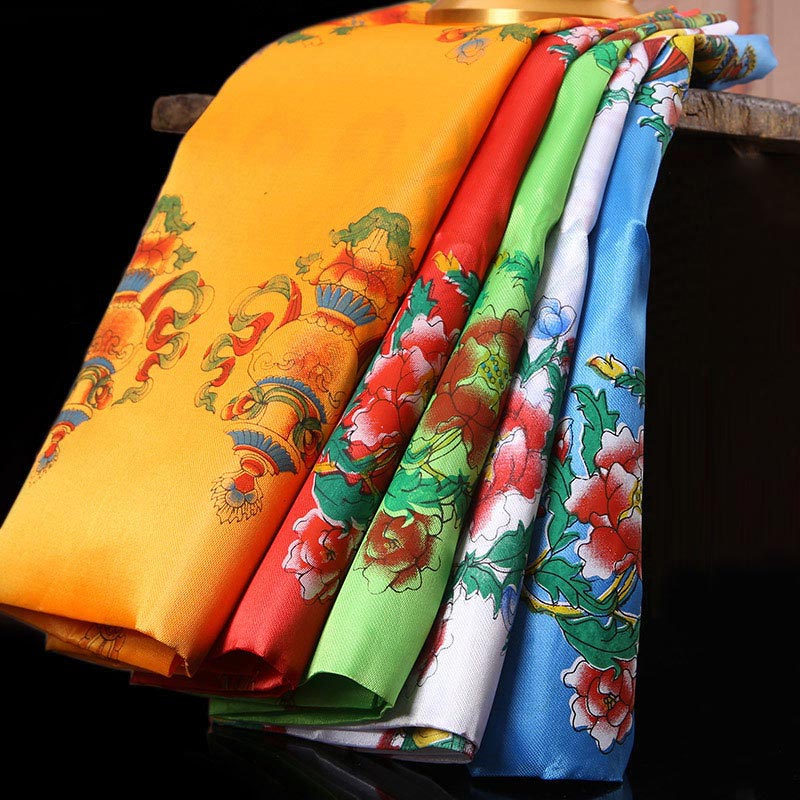
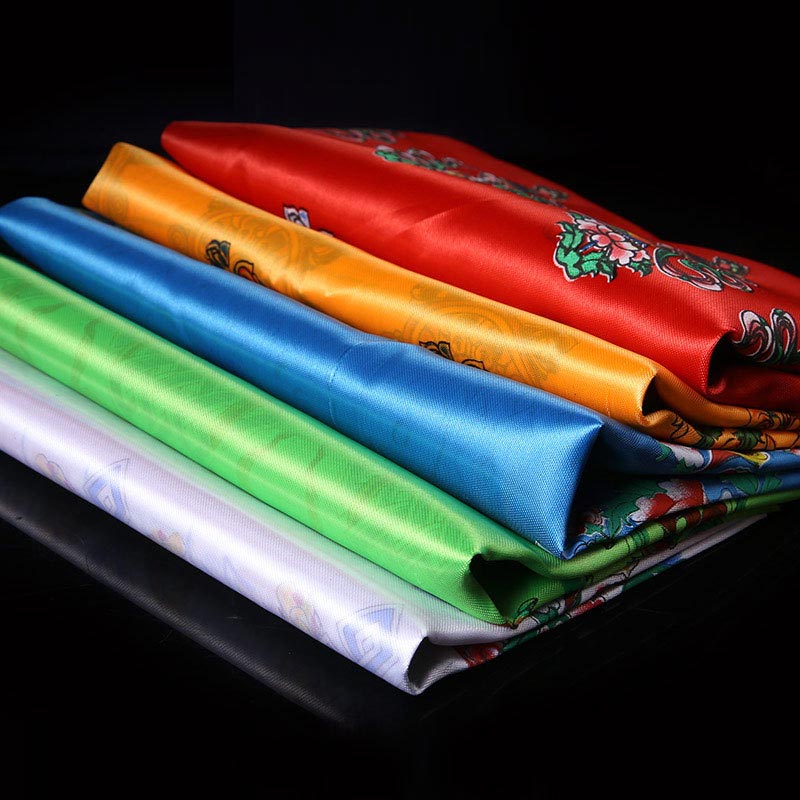
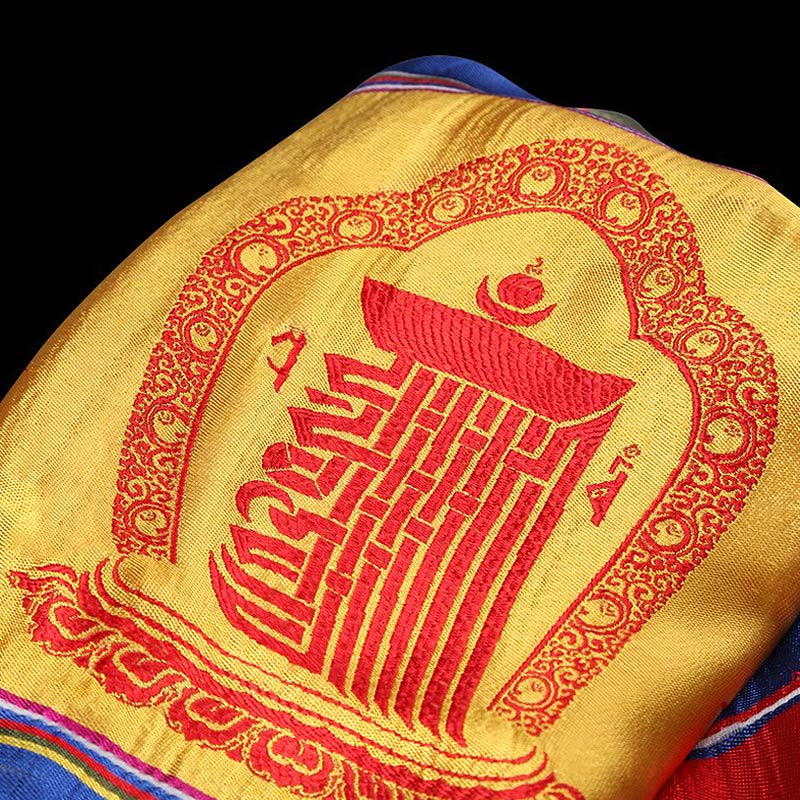
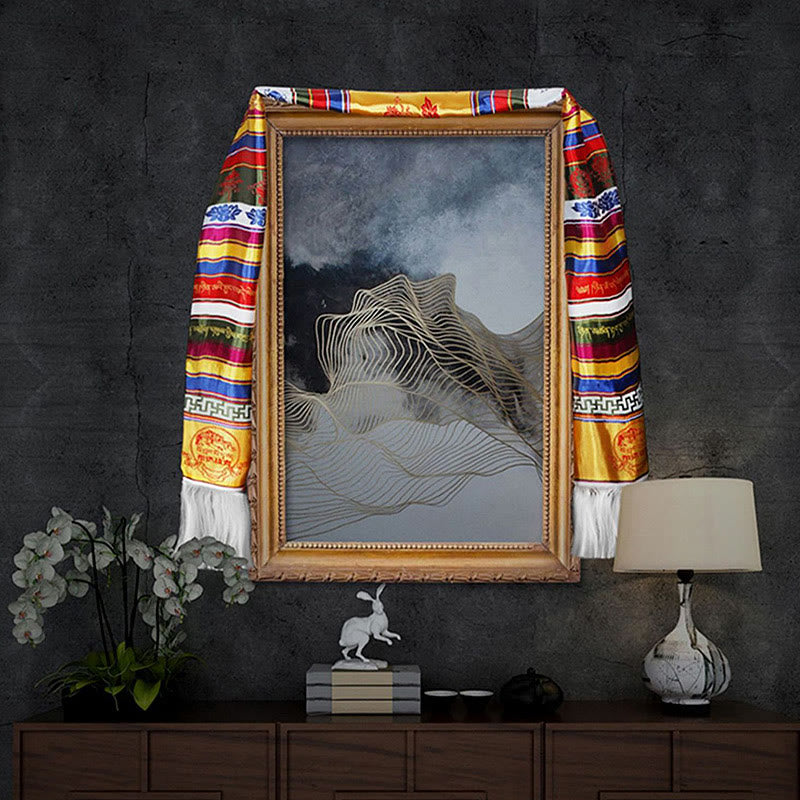
Bienvenue chez Healing Sounds, où traditions ancestrales et pratiques spirituelles modernes se rencontrent. Notre collection de drapeaux de prière tibétains est bien plus qu'un simple objet décoratif ; ils sont des expressions vibrantes de paix, de compassion, de sagesse et de force, conçues pour bénir l'environnement et tous les êtres sensibles.
Ces bannières sacrées, profondément ancrées dans la philosophie bouddhiste, véhiculent vœux et prières portés par le vent, diffusant une énergie positive au loin. Explorez notre sélection authentique et invitez les bienfaits sereins de l'Himalaya dans votre vie et votre espace.
Comprendre les origines et le but des drapeaux de prière tibétains
La tradition des drapeaux de prière tibétains , ou « Lung Ta » (qui signifie Cheval du Vent), remonte à des milliers d'années, antérieure au bouddhisme au Tibet et issue de l'ancienne religion Bön. À l'origine, ces drapeaux étaient des tissus colorés gravés de symboles protecteurs et de prières chamaniques, accrochés aux montagnes et près des rivières pour apaiser les divinités locales et les esprits de la nature.
Avec l'arrivée du bouddhisme au Tibet vers le VIIe siècle, cette pratique indigène s'est intégrée harmonieusement. Les prières chamaniques ont progressivement été remplacées par des mantras, des sutras et des symboles bouddhistes, transformant les drapeaux en puissants outils de pratique spirituelle. Leur objectif principal, cependant, est resté le même : générer du mérite, purifier le karma négatif et diffuser des énergies bénéfiques pour le bien-être de tous.
La croyance veut que lorsque le vent souffle sur ces symboles et textes sacrés imprimés sur les drapeaux, il transporte leurs bénédictions, leurs prières et leurs vibrations positives à travers le pays. Ce geste de transmettre ces prières à l'univers est une puissante expression de compassion désintéressée, bénéfique non seulement à celui qui accroche les drapeaux, mais aussi à tous les êtres touchés par le vent.
Chez Healing Sounds, nous honorons ce profond héritage en proposant des bannières de prière traditionnelles , confectionnées avec respect et intention. Chaque bannière de notre collection témoigne de cet héritage spirituel durable, conçu pour apporter harmonie et énergie positive.
La signification profonde des couleurs et des symboles des drapeaux de prière
Les couleurs vibrantes et les motifs complexes des drapeaux de prière tibétains sont riches en symboles, chaque élément contribuant à leur efficacité spirituelle. Comprendre ces significations approfondit le lien avec la pratique et renforce leur pouvoir.
Traditionnellement, les drapeaux de prière sont vendus par lots de cinq, disposés dans un ordre précis de gauche à droite : bleu, blanc, rouge, vert et jaune. Chaque couleur représente l'un des cinq éléments et les cinq lumières pures :
- Le bleu symbolise le ciel et l'espace. Il représente la guérison et la pureté.
- Le blanc symbolise l'air et le vent. Il représente l'apprentissage et la connaissance.
- Le rouge symbolise le feu. Il représente la force vitale et la préservation.
- Le vert symbolise l'eau. Il représente la croissance et l'activité.
- Le jaune symbolise la terre. Il représente la stabilité et l'ancrage.
Ensemble, ces couleurs de drapeaux de prière créent un équilibre entre les énergies élémentaires, favorisant l'harmonie et le bien-être. Un ordre précis est crucial pour maintenir cet équilibre.
Mantras sacrés et symboles puissants
Au-delà des couleurs, les drapeaux sont ornés d'une variété d'images, de mantras et de prières. L'image centrale de nombreux drapeaux traditionnels Lung Ta est le Cheval de Vent (Lung Ta), puissant symbole de vitesse, de force et de capacité à surmonter les obstacles. Le Cheval de Vent est souvent représenté portant trois joyaux flamboyants sur son dos, représentant le Bouddha, le Dharma (les enseignements bouddhistes) et la Sangha (la communauté bouddhiste).
Autour du Cheval de Vent se trouvent divers mantras et prières , ainsi que des syllabes et des vers sacrés censés posséder un pouvoir spirituel. Parmi les mantras les plus courants, on trouve « Om Mani Padme Hum », le mantra de la compassion, associé à Avalokiteśvara, le bodhisattva de la compassion. D'autres prières peuvent inclure des vœux de paix, de prospérité, de sagesse et de longévité.
Les coins des drapeaux arborent souvent des images des Quatre Dignités : le Garuda (sagesse, puissance), le Dragon (douceur, compassion), le Lion des Neiges (joie intrépide) et le Tigre (confiance, conscience disciplinée). Ces symboles sacrés renforcent encore les vertus protectrices et propices du drapeau.
Comprendre la signification des drapeaux de prières transforme ces simples décorations en de profonds outils spirituels. Chaque élément est soigneusement choisi pour contribuer à la bénédiction qu'ils apportent.
Découverte des différents types de drapeaux de prière tibétains
Bien que le type le plus courant et le plus reconnaissable soit le drapeau de prière tibétain horizontal Lung Ta ou Cheval du Vent , il existe des variations de conception et d'usage au sein de la catégorie plus large des drapeaux de prière bouddhistes . Ces différences reflètent souvent des divinités, des intentions ou des traditions spécifiques.
Les drapeaux horizontaux, tendus le long d'une ligne, flottent au vent, portant leurs messages au loin. On les voit généralement orner les cols de montagne, les stupas, les monastères et les maisons. Polyvalents, ils sont largement utilisés pour les bénédictions générales et la création d'une atmosphère sacrée.
Une autre forme est le drapeau de prière vertical, appelé Darchor. Il s'agit de grands drapeaux simples fixés à des mâts. Ces drapeaux arborent souvent de longs textes et sont parfois dédiés à des divinités spécifiques ou à des fins particulières, comme la longévité ou la guérison d'une maladie. Bien que moins courants pour un usage domestique, ils constituent un élément important du paysage monastique et des temples.
Vous trouverez également des mini drapeaux de prière , des versions plus petites, parfaites pour les autels personnels, les espaces intérieurs ou même les véhicules. Ils portent la même symbolique et la même intention, mais en version réduite pour des ambiances plus intimes. Healing Sounds propose différentes tailles pour ces décorations de prière himalayennes , adaptées à différents besoins et lieux.
Certains drapeaux de prière peuvent mettre en valeur des divinités particulières, comme Guru Rinpoché (Padmasambhava), Tara ou le Bouddha de la Médecine, en présentant leurs images et leurs mantras spécifiques. Ils sont choisis en fonction du lien personnel du pratiquant ou d'une aspiration particulière, comme la guérison ou la protection.
Notre sélection comprend souvent des drapeaux imprimés au Népal , dont beaucoup proviennent d'initiatives de drapeaux de prière issus du commerce équitable , garantissant ainsi le respect de la tradition et le soutien des artisans. Cet approvisionnement éthique fait partie intégrante de l'engagement de Healing Sounds.
La pratique sacrée de l'affichage des drapeaux de prière bouddhistes
Accrocher des drapeaux de prière tibétains est un acte conscient, empreint d'intention et de respect. Plus qu'une simple décoration, c'est une pratique spirituelle visant à cultiver une énergie positive et à apporter du bien à tous les êtres. Principalement associée au bouddhisme tibétain, cette pratique a été adoptée par des personnes de diverses voies spirituelles à travers le monde, en raison de son message universel de paix et de compassion.
La principale religion qui utilise les drapeaux de prière tibétains est le bouddhisme tibétain . Dans cette tradition, les drapeaux sont considérés comme un moyen de purifier l'environnement, d'accumuler des mérites et d'adresser des prières pour la paix, le bonheur et l'illumination. Leur suspension est souvent accompagnée de prières et de dédicaces.
Directives pour un affichage respectueux
Il existe des directives traditionnelles pour la manipulation et l'affichage des drapeaux tibétains afin de préserver leur caractère sacré :
- Manipulation respectueuse : Traitez toujours les drapeaux de prière avec respect. Ils ne doivent pas toucher le sol ni être piétinés. Lorsqu'ils sont vieux et décolorés, il est préférable de les brûler, afin que la fumée puisse transporter leurs dernières bénédictions vers le ciel, plutôt que de les jeter à la poubelle.
- Calendrier : Traditionnellement, les jours propices du calendrier tibétain sont choisis pour l'installation des nouveaux drapeaux, comme lors du Losar (Nouvel An tibétain) ou d'autres fêtes bouddhistes importantes. Cependant, ils peuvent être installés à tout moment avec une intention pure.
- Emplacements de suspension : Les drapeaux de prière sont généralement suspendus à l'extérieur, à l'abri du vent. On les suspend souvent en hauteur, comme sur les cols de montagne, sur les toits, au-dessus des rivières ou entre les arbres. On peut également les accrocher dans les jardins, les terrasses ou les balcons. L'important est de choisir un endroit où ils peuvent bouger librement.
- Hauteur : Il est respectueux d'accrocher les drapeaux de prière en hauteur, symbolisant leur noble fonction spirituelle. Évitez de les suspendre à un endroit où des personnes pourraient passer dessous de manière irrespectueuse ou où ils pourraient être souillés.
Comment accrocher des drapeaux de prière
La méthode de suspension est simple. Les drapeaux de prière horizontaux sont suspendus à une corde ou un fil solide. Veillez à les suspendre dans le bon ordre de couleurs s'il s'agit d'un ensemble traditionnel (bleu, blanc, rouge, vert, jaune de gauche à droite, ou de haut en bas s'ils sont suspendus verticalement en ficelle). Fixez fermement les extrémités de la ficelle pour que les drapeaux résistent au vent et aux intempéries.
Lors de l'accrochage de nouveaux drapeaux, il est de coutume de réciter des mantras ou des prières, axés sur des intentions de paix, de compassion et de bien-être pour tous. Les anciens drapeaux sont souvent laissés à côté des nouveaux, ou ils sont jetés respectueusement, généralement par le feu.
La signification spirituelle du drapeau tibétain est profondément liée à cet acte d’offrande et de présence continue, nous rappelant l’impermanence de toutes choses et le pouvoir durable de la prière.
Drapeaux de prière tibétains pour diffuser la paix et l'énergie positive
L'utilité fondamentale des drapeaux de prière tibétains est de répandre la paix, la compassion, la force et la sagesse. Lorsque le vent souffle sur les drapeaux, les mantras et symboles sacrés qui y sont inscrits se propagent à travers le pays, purifiant l'air et sanctifiant l'environnement. Cette diffusion d'énergie positive est destinée à bénéficier à tous les êtres sensibles, et pas seulement à la personne qui a accroché les drapeaux ou à son entourage.
Ces drapeaux tibétains d'extérieur rappellent constamment et silencieusement l'interdépendance de toute vie et l'importance de cultiver la bienveillance. Leur présence peut transformer un espace ordinaire en un lieu de contemplation et de sérénité. Nombreux sont ceux qui choisissent de les accrocher dans leur jardin ou sur leur véranda pour créer une atmosphère paisible propice à la méditation ou à la détente.
Au-delà de leur fonction spirituelle, les drapeaux de prière tibétains sont également appréciés pour leur beauté esthétique. Leurs couleurs vibrantes et leurs motifs complexes ajoutent une touche de culture et d'art himalayens à tout décor. Ils peuvent constituer un ajout élégant et significatif à la décoration extérieure , apportant un sentiment de tranquillité et des vibrations positives aux maisons, studios de yoga, centres de retraite ou espaces communautaires.
Les drapeaux de prière tibétains servent également à marquer les lieux sacrés, les stupas et les monastères, témoignant de leur importance spirituelle et créant une frontière protectrice et bénie. Ils sont également suspendus lors de cérémonies spéciales, de festivals et d'événements personnels marquants pour invoquer bénédictions et auspices.
Chez Healing Sounds, nous comprenons que chaque ensemble de drapeaux de prière tibétains en vente a le potentiel de devenir un symbole d'espoir et de positivité. Notre collection vise à proposer des drapeaux authentiques et de haute qualité qui honorent cette profonde tradition.
Choisir et entretenir vos drapeaux de prière tibétains
Pour choisir les drapeaux de prière tibétains adaptés à votre espace, tenez compte de leur taille, des symboles ou mantras qui vous parlent et de l'emplacement prévu. Que vous recherchiez de grands drapeaux pour décorer un espace extérieur ou des mini drapeaux de prière pour un autel personnel, l'intention derrière leur installation est primordiale.
Tenez compte de la qualité du matériau et de l'impression. Traditionnellement, les drapeaux de prière sont fabriqués en coton ou en soie et imprimés à la planche de bois. Bien que des méthodes modernes soient également utilisées, la clarté des textes et symboles sacrés est essentielle. Nos drapeaux, souvent imprimés au Népal , s'efforcent de préserver cette authenticité.
Une fois suspendus, les drapeaux de prière tibétains sont destinés à être exposés aux éléments. Leur décoloration et leur effilochage naturels au fil du temps symbolisent l'impermanence de la vie et le cycle incessant du renouveau. Cela fait partie de leur cheminement spirituel. Il n'est pas nécessaire de les conserver indéfiniment ; leur vieillissement est une représentation visuelle des prières qui s'y expriment.
Lorsque les drapeaux sont considérablement abîmés ou décolorés, la tradition veut qu'ils soient remplacés par des neufs. Les anciens drapeaux doivent être éliminés avec respect, idéalement en les brûlant. Cet acte est perçu comme une libération de l'essence ultime des prières dans l'atmosphère. Évitez de les jeter à la poubelle, car cela est considéré comme un manque de respect envers les textes et symboles sacrés qu'ils véhiculent.
En choisissant vos drapeaux avec intention et en les entretenant avec respect, vous vous engagez dans une pratique qui apporte réconfort, inspiration et bénédictions depuis des siècles. Ces décorations de prière himalayennes sont plus que de simples objets ; elles participent activement à votre cheminement spirituel et sont un vecteur de changement positif dans le monde.
La présence de drapeaux de prière tibétains peut transformer n'importe quel environnement, lui insufflant un sentiment de paix et de sacralité. Ils nous rappellent constamment nos aspirations les plus élevées et la puissance des intentions bienveillantes portées par le vent.
Questions fréquemment posées sur les drapeaux de prière tibétains
Les drapeaux de prière tibétains sont des bannières sacrées ornées de mantras, de sutras et de symboles de bon augure. Leur signification fondamentale est de répandre la paix, la compassion, la sagesse et la force. Le vent qui les traverse est censé apporter ces bénédictions et ces intentions positives à tous les êtres et à leur environnement.
La principale religion qui utilise les drapeaux de prière tibétains est le bouddhisme tibétain . Ils font partie intégrante de cette tradition spirituelle, servant à générer du mérite, à purifier la négativité et à adresser des prières. Cependant, leur message universel de paix a conduit à leur adoption par des personnes de diverses voies spirituelles à travers le monde.
Les drapeaux de prière tibétains traditionnels se composent de cinq couleurs, disposées selon un ordre précis : bleu (ciel/espace), blanc (air/vent), rouge (feu), vert (eau) et jaune (terre). Chaque couleur représente un élément et une qualité spécifique, ou lumière pure, symbolisant collectivement l'équilibre et l'harmonie.
Parmi les symboles courants des drapeaux de prière tibétains, on trouve le Cheval du Vent (Lung Ta) , symbole de la rapidité et de la transformation du malheur en bien. On y trouve également divers mantras bouddhistes (comme « Om Mani Padme Hum »), des extraits de sutras et des représentations de divinités ou d'animaux de bon augure comme Garuda, le Dragon, le Lion des Neiges et le Tigre, connus sous le nom des Quatre Dignités. Ces symboles sacrés renforcent le pouvoir spirituel des drapeaux.
Les drapeaux de prière tibétains sont principalement utilisés pour promouvoir la paix, la compassion, la sagesse et la force. On les suspend pour bénir l'environnement, purifier le karma négatif et générer du mérite. Ils servent également de décorations de prière himalayennes pour les maisons et les lieux sacrés, créant une atmosphère paisible et spirituelle. Ils sont souvent utilisés comme décoration extérieure à connotation sacrée.
Les drapeaux de prière tibétains devraient idéalement être suspendus en hauteur, à l'extérieur, où le vent peut les traverser librement. On les suspend généralement sur les toits, dans les cols de montagne, entre les arbres, au-dessus des jardins, sur les terrasses ou sur les balcons. L'essentiel est de choisir un emplacement qui permette au vent de porter leurs bénédictions et de les traiter avec respect, sans qu'ils touchent le sol.
Pour suspendre correctement les drapeaux de prière tibétains , accrochez-les à une corde solide en respectant l'ordre traditionnel des couleurs (bleu, blanc, rouge, vert, jaune, de gauche à droite). Fixez-les solidement dans un endroit surélevé à l'extérieur. Il est d'usage de réciter des prières ou des mantras et de se concentrer sur des intentions positives en les suspendant. Évitez qu'ils ne touchent le sol.
Les règles clés incluent le respect des drapeaux tibétains : ne pas les laisser toucher le sol ni marcher dessus. Suspendez-les en hauteur et dans des endroits propres. Lorsqu'ils sont vieux et décolorés, il convient de les éliminer respectueusement, traditionnellement en les brûlant plutôt qu'en les jetant à la poubelle. Il est également conseillé d'accrocher les nouveaux drapeaux les jours propices, si possible, avec une intention pure.
Oui, il est généralement acceptable pour chacun de posséder des drapeaux de prière tibétains , quelles que soient ses croyances personnelles, à condition d'être traité avec respect. L'objectif des drapeaux de prière est universel : répandre la paix, la compassion et les vœux. Les suspendre avec une intention positive honore leur fonction.
Pour explorer davantage d'options de décoration spirituelle, visitez notre collection principale d'art mural et de tentures .





